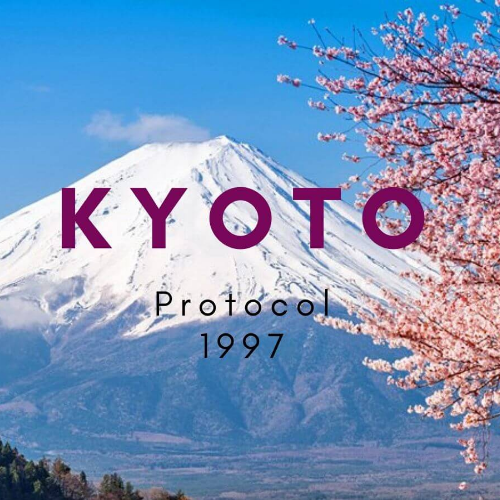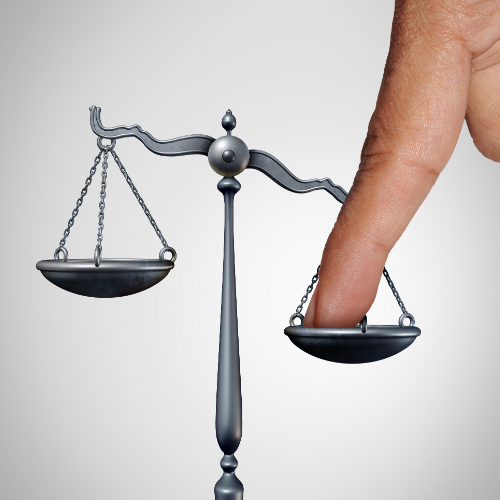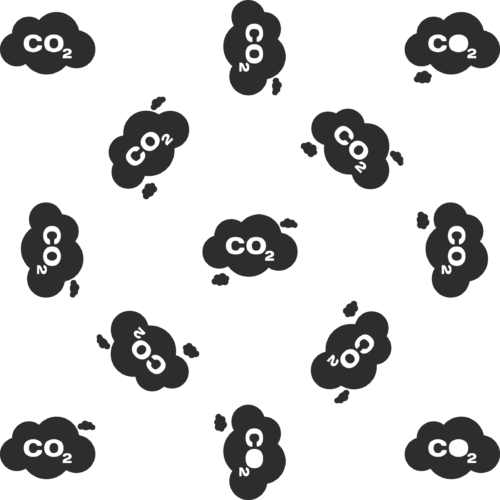WHAT IS A CARBON CREDIT?
Carbon credits are a mechanism that economists have devised to try to control and incentivise companies to reduce the amount of greenhouse gases that they generate through industrialisation activities (the production of goods and services).
Carbon credits are intended as one way of controlling how much greenhouse gases are produced by human activities, in order to reduce climate change from global warming.
Read More
Government would issue a company with a yearly CO2 emission upper limit. They must perform to the target for greenhouse gas emissions that they are allowed each year. Emissions of other greenhouse gases and pollutants are converted into their equivalent impact in carbon dioxide, so that companies can be compared fairly. Generally, if they exceed these amounts, then they are charged by governments and institutions (the polluter pays principle).
This carbon accounting system means that every tonne of carbon dioxide is worth something. Companies are then incentivised to reduce their emissions through
- Reducing the amount that they pollute by making their production cleaner and more efficient.
- Use products and suppliers that are carbon neutral.
- Offsetting any remaining greenhouse gas (GHG) emissions.
Companies that avoid generating GHG emissions like a wind farm or destroy GHG emissions like a biogas project can become a certified facility and they can then sell their carbon credits to other companies that want to avoid being penalised.
When did the idea of carbon credits first come up?
The idea of carbon credits first arose after the climate agreements in the Kyoto Protocol were agreed in 1997. It is a legal market approach (i.e. involving money and economics) to controlling environmental behaviour of individuals and companies around the world, by putting a financial value on something that is invisible and sometimes intangible.
How does the carbon credit system work?
Companies that produce goods and services will generate pollution through their production activities. This pollution translates into a certain amount of carbon dioxide per year (although the pollutants they generate may not only be carbon). This total amount of carbon (or its equivalent) that they generate can be calculated for the whole year.
It is separated into three groups, Scope 1, Scope 2 and Scope 3. Depending on the relevant government legislation, companies that produce high emissions can be incentivised or penalised to meet agreed emission targets. It makes sense for them to improve their methods of production so that they generate less harmful emissions, and in this way, they will save money by not paying fines. In the future companies will be given a set limit on emissions per year, which will be recorded in tonnes of carbon dioxide equivalent.
If a company cannot reduce their emissions, buying carbon credits is a way of helping them transition to cleaner production and business methods while their business adjusts.
What does a carbon credit vintage mean?
The vintage of a carbon credit refers to the year that the emission reduction was generated or made (a bit like wine!). This is important, every 1 tonne carbon credit has a unique vintage and identifier. This is to prevent them being ‘double counted’. Essentially, the vintage and individual number certifies the credit, so that it can be identified and its retirement confirmed during the process of audit and reporting . This is done in order to prevent companies from claiming that they are carbon neutral, when in fact they are not.
Read Less




What is a carbon credit?




Carbon credits are a mechanism that economists have devised to try to control and incentivise companies to reduce the amount of greenhouse gases that they generate through industrialisation activities (the production of goods and services).
Carbon credits are intended as one way of controlling how much greenhouse gases are produced by human activities, in order to reduce climate change from global warming.
Read More
Government would issue a company with a yearly CO2 emission upper limit. They must perform to the target for greenhouse gas emissions that they are allowed each year. Emissions of other greenhouse gases and pollutants are converted into their equivalent impact in carbon dioxide, so that companies can be compared fairly. Generally, if they exceed these amounts, then they are charged by governments and institutions (the polluter pays principle).
This carbon accounting system means that every tonne of carbon dioxide is worth something. Companies are then incentivised to reduce their emissions through
- Reducing the amount that they pollute by making their production cleaner and more efficient.
- Use products and suppliers that are carbon neutral.
- Offsetting any remaining greenhouse gas (GHG) emissions.
Companies that avoid generating GHG emissions like a wind farm or destroy GHG emissions like a biogas project can become a certified facility and they can then sell their carbon credits to other companies that want to avoid being penalised.
When did the idea of carbon credits first come up?
The idea of carbon credits first arose after the climate agreements in the Kyoto Protocol were agreed in 1997. It is a legal market approach (i.e. involving money and economics) to controlling environmental behaviour of individuals and companies around the world, by putting a financial value on something that is invisible and sometimes intangible.
How does the carbon credit system work?
Companies that produce goods and services will generate pollution through their production activities. This pollution translates into a certain amount of carbon dioxide per year (although the pollutants they generate may not only be carbon). This total amount of carbon (or its equivalent) that they generate can be calculated for the whole year.
It is separated into three groups, Scope 1, Scope 2 and Scope 3. Depending on the relevant government legislation, companies that produce high emissions can be incentivised or penalised to meet agreed emission targets. It makes sense for them to improve their methods of production so that they generate less harmful emissions, and in this way, they will save money by not paying fines. In the future companies will be given a set limit on emissions per year, which will be recorded in tonnes of carbon dioxide equivalent.
If a company cannot reduce their emissions, buying carbon credits is a way of helping them transition to cleaner production and business methods while their business adjusts.
What does a carbon credit vintage mean?
The vintage of a carbon credit refers to the year that the emission reduction was generated or made (a bit like wine!). This is important, every 1 tonne carbon credit has a unique vintage and identifier. This is to prevent them being ‘double counted’. Essentially, the vintage and individual number certifies the credit, so that it can be identified and its retirement confirmed during the process of audit and reporting . This is done in order to prevent companies from claiming that they are carbon neutral, when in fact they are not.
Read Less
What is a carbon credit?
Carbon credits are a mechanism that economists have devised to try to control and incentivise companies to reduce the amount of greenhouse gases that they generate through industrialisation activities (the production of goods and services).
Carbon credits are intended as one way of controlling how much greenhouse gases are produced by human activities, in order to reduce climate change from global warming.
Read More
Government would issue a company with a yearly CO2 emission upper limit. They must perform to the target for greenhouse gas emissions that they are allowed each year. Emissions of other greenhouse gases and pollutants are converted into their equivalent impact in carbon dioxide, so that companies can be compared fairly. Generally, if they exceed these amounts, then they are charged by governments and institutions (the polluter pays principle).
This carbon accounting system means that every tonne of carbon dioxide is worth something. Companies are then incentivised to reduce their emissions through
- Reducing the amount that they pollute by making their production cleaner and more efficient.
- Use products and suppliers that are carbon neutral.
- Offsetting any remaining greenhouse gas (GHG) emissions.
Companies that avoid generating GHG emissions like a wind farm or destroy GHG emissions like a biogas project can become a certified facility and they can then sell their carbon credits to other companies that want to avoid being penalised.
When did the idea of carbon credits first come up?
The idea of carbon credits first arose after the climate agreements in the Kyoto Protocol were agreed in 1997. It is a legal market approach (i.e. involving money and economics) to controlling environmental behaviour of individuals and companies around the world, by putting a financial value on something that is invisible and sometimes intangible.
How does the carbon credit system work?
Companies that produce goods and services will generate pollution through their production activities. This pollution translates into a certain amount of carbon dioxide per year (although the pollutants they generate may not only be carbon). This total amount of carbon (or its equivalent) that they generate can be calculated for the whole year.
It is separated into three groups, Scope 1, Scope 2 and Scope 3. Depending on the relevant government legislation, companies that produce high emissions can be incentivised or penalised to meet agreed emission targets. It makes sense for them to improve their methods of production so that they generate less harmful emissions, and in this way, they will save money by not paying fines. In the future companies will be given a set limit on emissions per year, which will be recorded in tonnes of carbon dioxide equivalent.
If a company cannot reduce their emissions, buying carbon credits is a way of helping them transition to cleaner production and business methods while their business adjusts.
What does a carbon credit vintage mean?
The vintage of a carbon credit refers to the year that the emission reduction was generated or made (a bit like wine!). This is important, every 1 tonne carbon credit has a unique vintage and identifier. This is to prevent them being ‘double counted’. Essentially, the vintage and individual number certifies the credit, so that it can be identified and its retirement confirmed during the process of audit and reporting . This is done in order to prevent companies from claiming that they are carbon neutral, when in fact they are not.
Read Less







